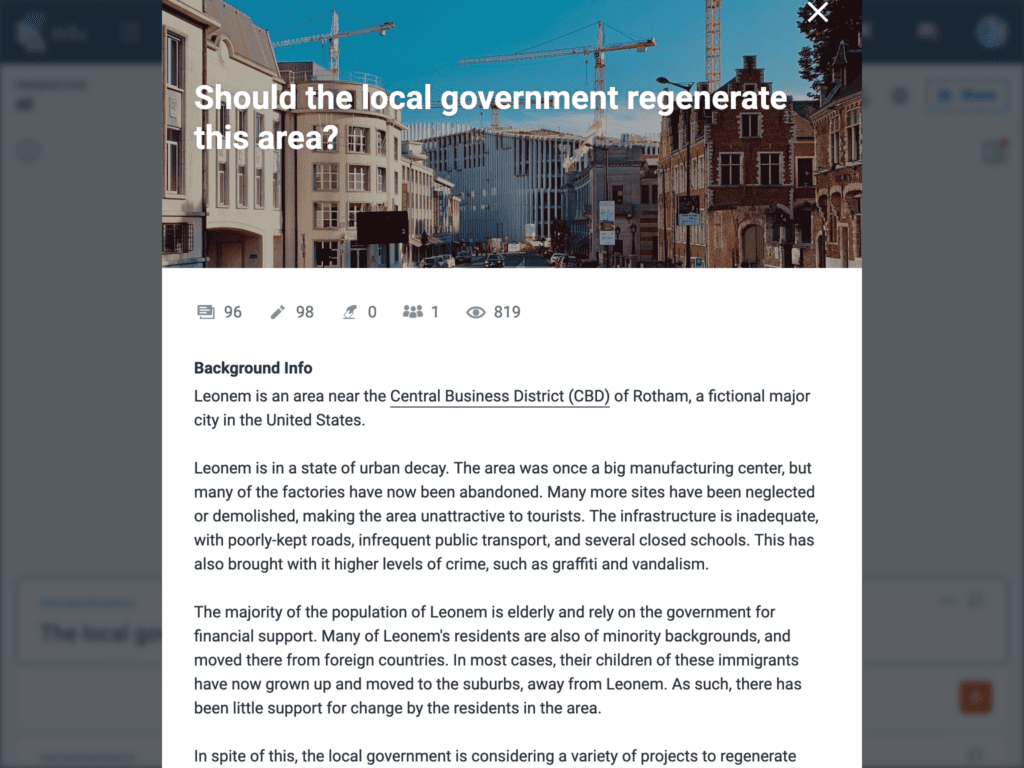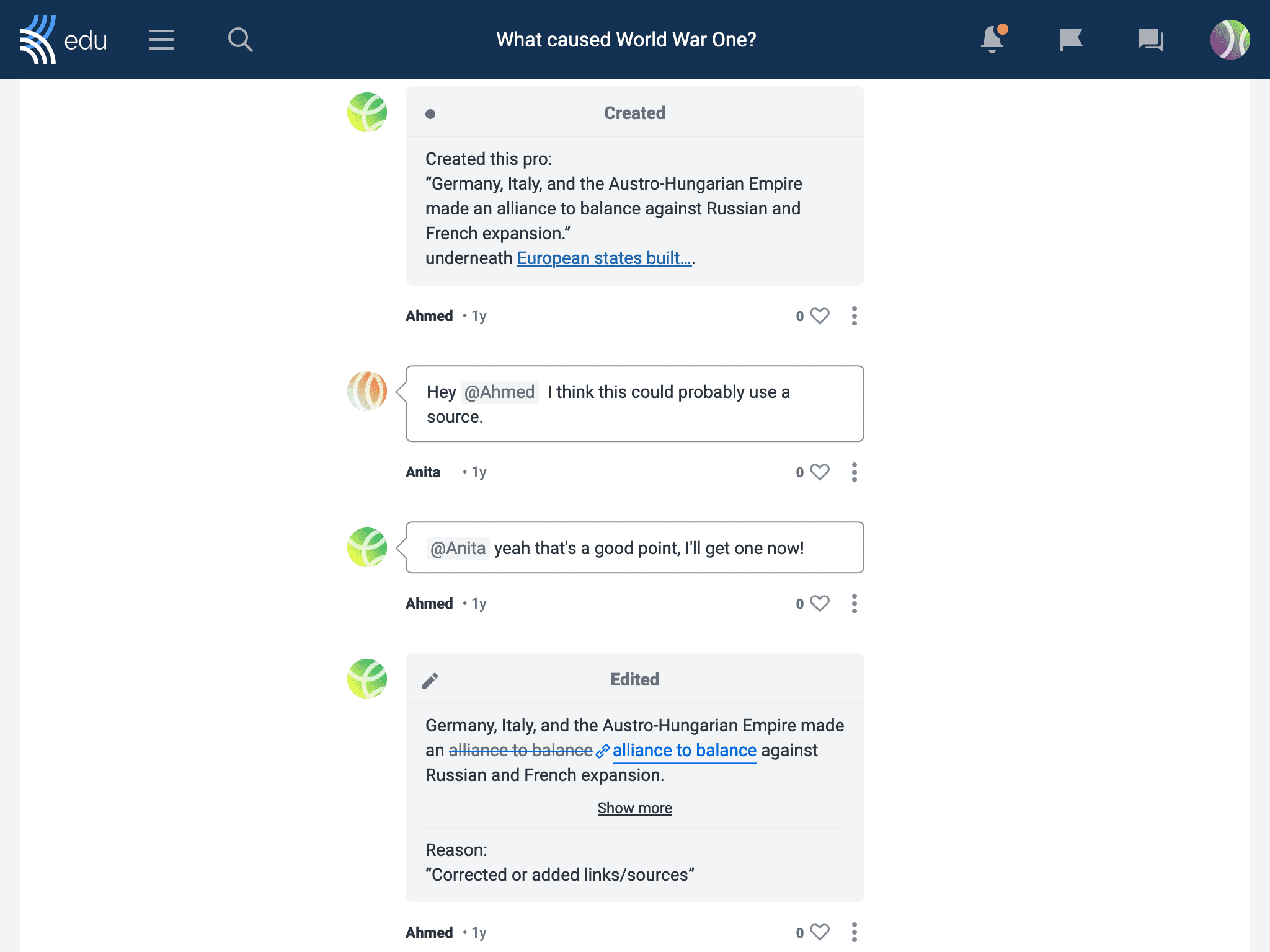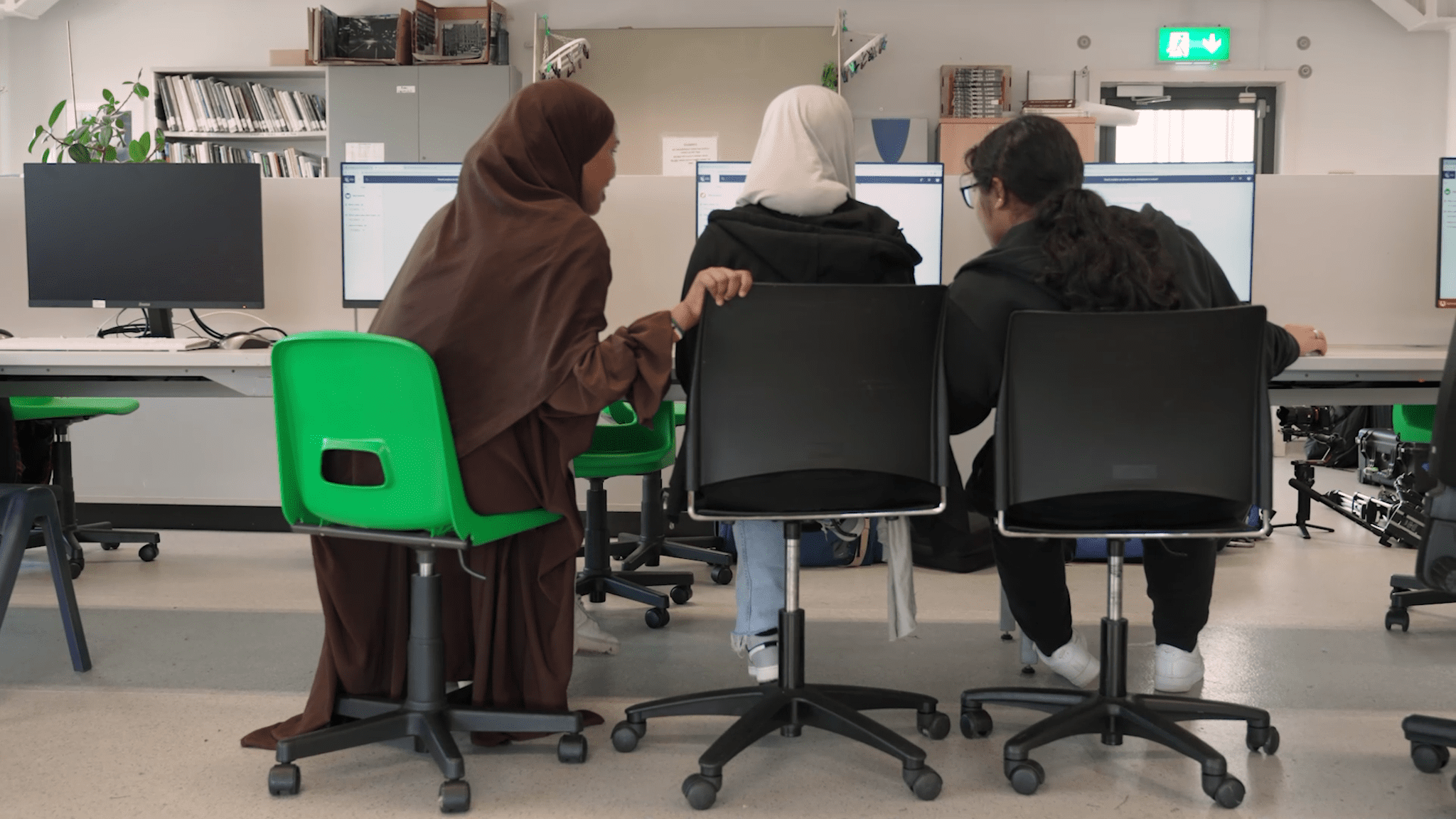It is now common to see students interacting with and learning from each other in many classrooms. And it’s easy to see why! With an emphasis on collaboration and active learning, peer-to-peer learning strategies can be a powerful tool for student engagement.
We’ll look at why peer-to-peer learning is beneficial, outline some effective peer-to-peer learning strategies, and then look at how Kialo Edu can support such collaborative approaches.
What are the benefits of peer-to-peer learning?
Here are some of the learning benefits students reap from peer-to-peer learning. These benefits lead to increased learning outcomes for skills that students can take beyond the classroom.
Increased student participation
Working in pairs or small groups can benefit students who may not feel comfortable speaking out in front of the whole class. In groups, students have the opportunity to actively participate in a less intimidating format while benefiting from each other’s advice and guidance when needed. And, of course, the social aspect of learning with peers can be a motivating factor!
Increased communication and collaboration skills
In working towards a common goal with peers, students practice communication and collaboration skills which will benefit them far beyond the classroom walls. By collaborating, students build shared knowledge and understanding to process the material more deeply. Not only that, when classmates put their heads together, they can tackle challenging tasks that might have been too complex to address alone.
Opportunities to develop critical thinking skills
By working with peers, students are exposed to a wider range of perspectives, challenging them to consider different viewpoints as well as to question their own assumptions. In doing so, students can learn to take a more open-minded attitude and develop a deeper, more nuanced understanding of the topic at hand.
Now that we’ve outlined why it’s beneficial to integrate peer-to-peer learning in the classroom, let’s look at some peer-to-peer learning strategies that you can use in your lessons.
What are some popular peer-to-peer learning strategies?
In think-pair-share, teachers first pose a prompt to the class and give individual students time to develop their own responses. They then turn to a partner to discuss their ideas, before sharing their thoughts with the wider class.
This simple but highly effective strategy fits easily into any part of a lesson. It works because it gives students time to process information individually and then articulate their ideas. You might use it to draw students’ attention to key content concepts, gauge understanding at strategic points during a lesson, or encourage a more responsive discussion.
If you’re having a discussion on Kialo Edu, have students work two-to-a-device to collaboratively develop claims. Ask the pairs to pause to think about each claim, then discuss it with their partner to come up with an agreed pro or con to write and share in the discussion.
Collaborative assignments: Use case studies to have students apply content knowledge to real-world scenarios
Working on collaborative assignments requires skills beyond those needed to work individually. Students reap the benefits of collaborative learning, while also developing practical skills such as time and project management, setting deadlines, and establishing communication norms. Having peers collaborate also allows students to support each other and take on more challenging or time-heavy tasks.
A great assignment is to have students collaborate on a case study. Case-based learning has groups analyze an authentic situation, identify the problem and propose solutions, and apply theoretical knowledge to a real-world issue. Students practice decision-making, synthesis and analysis of information, and communicating their ideas to collaborate with peers.
A Kialo discussion can act as a deliverable for a collaborative project, allowing students to focus their efforts towards a key objective. For instance, you could have students analyze if urban regeneration for an area is a good idea. Since students can work on discussions asynchronously and communicate right inside, discussions can play a central organizational role alongside a pedagogical one.

Discussions can also support collaborative decision-making efforts! Have groups brainstorm and decide on three or so possible solutions to a real-world issue — strategies to address climate change, for example. By creating a multi-thesis discussion, students can then critically examine each proposed solution to determine which holds the most potential.
Peer review: Use peer review to develop students’ skills in assessing their own work and that of their peers
In reviewing their peers’ work, students take a level of responsibility for their own and their classmates’ learning. This helps develop valuable skills in assessing work and providing constructive criticism. Peer review also gives students a glimpse into their classmates’ approaches to an assignment, helping them reflect on their own efforts.
Peers can review each other’s work at different stages of a task, whether that’s a proposed outline or the first draft of an essay. Importantly, teachers should provide students with clear guidance on how to provide feedback!
For example, you might provide a rubric with clearly defined steps to draw peer reviewers’ focus to higher-order issues such as identifying missing evidence or unaddressed counter-points, rather than having students focus exclusively on grammar and spelling errors.
You can build peer review into a Kialo discussion by having students comment on each other’s claims. Prompt them to highlight the successes to build up their peers’ confidence!

Reciprocal teaching: Use reciprocal teaching to improve comprehension and develop metacognitive skills
Reciprocal teaching is an instructional strategy that aims to improve student comprehension while developing metacognitive skills. In reciprocal teaching, students take on distinct roles to guide a discussion on input material such as a reading passage or the book they’re studying.
Each student role represents one reading strategy: predicting, questioning, clarifying, and summarizing. This encourages students to actively engage with a text or content area with their peers.
- The predictor uses contextual clues and their existing knowledge to predict the content of the material.
- The clarifier resolves any group confusion, such as new vocabulary or unclear sentences.
- The questioner generates questions to ask the group, which may require reading between the lines or seeking others’ opinions.
- The summarizer pulls together the main ideas to have the group summarize the content in their own words.
By working together in a group to use these four distinct strategies, students can deepen their understanding of the content as well as how to approach their learning.
Try using a pre-made Kialo discussion for content input in lieu of a text! Educators can populate a Kialo discussion with relevant claims targeted to their class needs. Set the student permissions to Viewer, then have students work in their roles as a group to analyze the content.
Jigsaw groupings are a popular cooperative learning strategy based on the idea of positive interdependence, meaning every member has a role in giving a valued contribution. Jigsaw groupings foster various skills such as research, information gathering, and organization while emphasizing effective communication. This gives students a chance to practice using domain-specific language, as well as explaining, summarizing, and clarifying skills.
Divide the class into small “expert groups,” and task each group to learn about a specific subtopic of the target content. When they have studied it in detail, rearrange the class into new groups so each new group includes an expert from each subtopic. Each group member is now responsible for sharing the knowledge gained in their respective expert groups.
If using a Kialo discussion with students, have expert groups organize their research and learning on their sub-topic before using the discussion as a visual tool to support when teaching their peers. These discussions can later be shared with the class to use as a learning review tool.
Socratic seminars: Use Socratic seminars to cultivate a culture of inquiry and respectful discourse
A Socratic seminar is a student-centered structured discussion that encourages joint exploration of a topic. This type of peer-to-peer learning fosters communication skills such as respectful inquiry and active listening.
Students should prepare for a Socratic seminar in advance by reviewing and annotating a text to consider the overarching questions of the text and the follow-up questions they will bring to the discussion. During the discussion, teachers should encourage open conversation and an inclusive environment; students might participate in a “fishbowl” style or in a single giant circle, for instance.
You can use Kialo discussions to help students prep for a Socratic seminar. Give each student an individual discussion with key starter claims to guide their analysis of a preparatory text in preparation for the seminar. Their completed discussion can then act as a visual support during the activity if needed. Build in a reflection task by having students revisit their discussion post-seminar to consider how their understanding and views have changed (or indeed been reinforced!).
Collaborative concept mapping: Use collaborative mapping approaches to encourage students to co-construct detailed knowledge
Collaborative concept mapping allows students to externalize and organize their thinking, building a visual representation of their shared understanding of the topic at hand. Students can use maps to promote deeper learning and they make a comprehensive learning review tool.
Kialo’s argument-mapping structure follows the same principles. Designed for breaking down arguments into understandable chunks, the connective format makes it easy to follow how these simple ideas build on one another to form complex reasoning.
You can use Kialo discussions to integrate peer-to-peer learning strategies as we’ve seen, but it can also support broader collaboration needs. Let’s take a look at how!
How can teachers support peer-to-peer learning strategies and collaboration with Kialo Edu?
Kialo was designed with collaboration in mind, with features to support learning and interaction in an inclusive space. Here, students work together to analyze complex questions, problem solve, or build their curricular knowledge.

Educators can set tasks to give groups objectives to guide their efforts, making sure students know just what is expected of them. Then teachers can breeze through assignments using our built-in grading tool to give fast, targeted feedback. Feedback is added right on students’ own claims (with the option of keeping it private to the student), meaning teachers have the option to assess individual contributions as well as the group’s overall result.
And, if students are working together outside the classroom, they have the option to use the Discussion Chat to coordinate and keep all their conversations right in the discussion itself.
We know that group work and collaboration can have their challenges alongside their benefits! We’d love to hear about your tips for bringing peer-to-peer learning into your classroom. Please do get in touch at feedback@kialo-edu.com or on any of our social media platforms.

